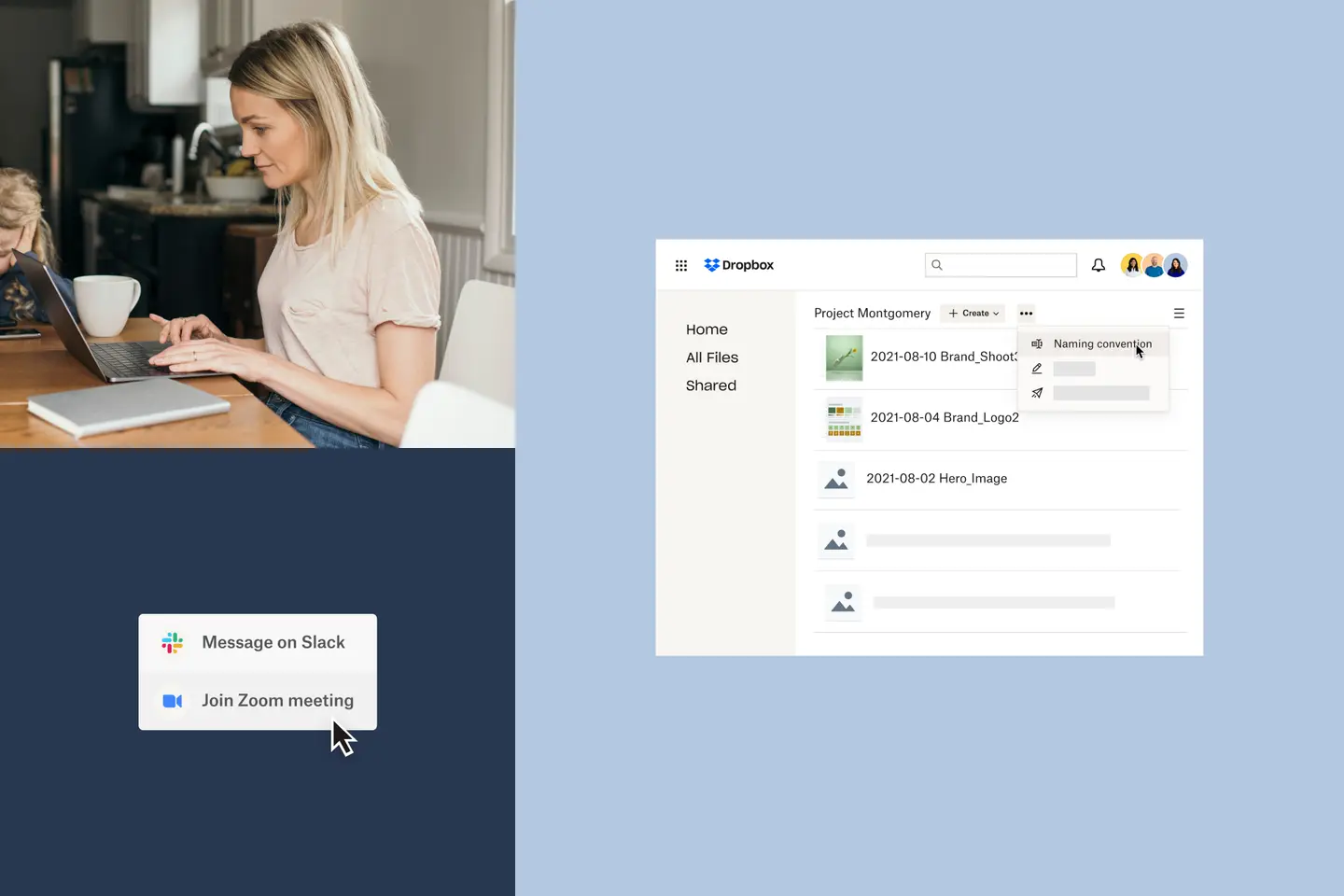By Felix McCabe, Dropbox Revenue Enablement Manager
Who remembers the story of Icarus; the man who flew too close to the sun? This was one of my favorite stories as a kid. Here you had the tale of man and his son, imprisoned on an island, plotting his escape through the innovation of a new technology—wings made of feathers and wax. Icarus flew from his island prison, only to crash to the sea and drown, having flown too close to the sun, melting his wings.
Our hero Icarus did not appreciate the limitations of his newfound technology. It’s a story of bad to worse, really, and his over-confidence ultimately led to his downfall.
Hearing this story again recently, I could see many parallels in the pandemic age of remote working. Similar to Icarus, we were imprisoned in offices where a culture of presenteeism ensured our capture; only to rise to freedom through the widespread growth of technologies like video conferencing and cloud computing.
Unfortunately, the fate of Icarus might also be ours if we do not heed its cautionary lessons.
The con of video conferencing
"Did you exchange a walk-on part in the war for a lead role in a cage?" This famous line from Pink Floyd’s 1975 classic, ‘Wish You Were Here’ perfect captures the essence of what we’ve become. Sure, we have the freedom to work wherever we want; but this is a fallacy. We have traded our offices for our spare bedrooms and sofas; our place at the conference table to the small squares we now inhabit on the laptop screen.
British ad-man and vice-chairman of Ogilvy UK, Rory Sutherland, famously joked that video conferencing was horrendously mis-sold as a technology. It was what we got to do because our organizations didn’t trust us to board a flight. Had it been marketed as the way chief executives made phone calls, it could have been something aspirational—“it should have been the rich man's British Telecom, not the poor man's British Airways.”
But the changing tide of modern work has seen video conferencing finally take its place in the mainstream. And for our sales teams, with whom I work, the day previously filled with in-person meetings is now filled with virtual meetings. From product marketing to customer success to us in sales enablement, everyone is vying for a precious piece of our sellers’ mindshare.
Zoom fatigue has set in.
Worse still, new and younger sales professionals do not benefit from overhearing their colleagues on their calls and chatting between meetings—what I refer to as “swivel chair enablement”—resulting in slower ramp times to full productivity.
This phenomenon can be best explained by Hermann Ebbinghaus’ Forgetting Curve. His thesis basically charts the rate at which we forget pieces of new information over time, without intentional practice or repetition.

Our sellers used to absorb information, as if by osmosis, simply by hearing their colleague have a difficult customer conversation or by talking through a win strategy at the coffee machine. These interactions were spontaneous—helpful and brief. Best of all, they were not a planned 30-minute virtual call that required an agenda, 5 minutes of pleasantries, and divided attention to the endless beep of the instant messages.
Like Icarus, they’re out of the frying pan into the fire (quite literally in his case).
You get the picture, but how do we solve for it, then? How do we win (hearts and) minds amongst the deluge of content being thrown at our salespeople?
Technology is the answer, but maybe not in the way that you think.
Our Greek hero should have known from a young age that if you play with fire, you get burned. The past can offer us a unique lens through which we can view the present. Better yet, in the immortal words of Emmett L. Browne from the Back to the Future movie franchise: “You’re just not thinking fourth-dimensionally.” We need to go back to an older technology.
Television is the answer
One of the more popular theories on how our brains perceive reality is the predictive mind theory (as explained in Georg Keller’s TED talk). Basically, our brains are constantly generating and updating predictions of what’s going to happen based on what it has seen before. We tend to swap to autopilot unless something unpredictable happens.
Now think about the last time you watched a good horror movie. They’re walking through the dark, in an abandoned house. You can almost hear the silence. It’s eerie. There’s a sudden noise…and now our heart rate increases with the main character’s. It’s hard not to be drawn into that world.
At Dropbox, we’ve been learning a lot from how movies and television attract and retain our attention. So much so, that we’ve brought a few of their techniques into how we’re showing up for our sales teams on some of our enablement calls. Here’s a few we’ve trialled that have gained good traction:
1. Movement and high-energy
Recording high-quality introductions to your call; adding movement like walking and talking can instantly give your audience a shock to the system guaranteeing their attention as you set the scene.
2. Graphics
Temporary call-outs on screen, such as presenter’s name and title, goes a long way to ensuring everyone knows who’s speaking while also offering another engaging element as it flies on screen and away again.
3. Pre-recording
Broadcasting’s biggest hack has always been to pre-record certain elements of their shows. It ensures quality—say for an introduction—but also safety and scale for VIP presenters like company VPs or customers.

4. Live interaction
The risk of pre-recording is ignoring your audience, which is exactly what we’re trying to avoid. So you still have to incorporate standard virtual engagement tools in the mix, like audience Q&A and polls. However, now they will be viewed with novelty as part of your new, high-quality broadcast.
Flattening the ‘Forgetting curve'
Sure we’ve got a few toys at our disposal, like a broadcast-quality camera to shoot video and a mixing desk to live edit; helping us bring all of this together. But don’t let that put you off. With the power of today’s smartphone camera and some excellent, free broadcasting technology (OBS studio), and a good collaborative multimedia tool — like Dropbox Replay; you too could replicate these tactics for your audience with little upfront investment. Try it!
Our wings are built and we’ve achieved flight. We’ve committed to uplifting our events at Dropbox (where it makes sense), and our engagement numbers support that. It allows us to add a new element to our Virtual First ways of working. Further, we’ve beaten down a path, creating a streamlined workflow, which has seen time invested in these enablement calls cut in half — very much making the juice worth the squeeze…we just might keep our distance from the sun this time.



